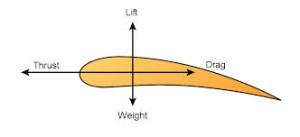 I didn’t get to fly this Thanksgiving weekend, but being with my family was even more precious. I have certainly been blessed to make it this far, to have an extraordinary family, and to have the ability to occasionally take to the sky.
I didn’t get to fly this Thanksgiving weekend, but being with my family was even more precious. I have certainly been blessed to make it this far, to have an extraordinary family, and to have the ability to occasionally take to the sky.
I will most likely not have an opportunity to climb into my DA40 and continue my IFR training for at least a few weeks, because business travel will put me in the “back seat” of some heavy metal. Nevertheless, I do look forward to planned trips to Mexico and Vietnam, hopefully garnering window seats if I can.
On my last commercial trip back from Mexico, I witnessed the most spectacular thunderstorms I had ever seen. At 30,000 feet, the lightning show was occurring directly across from us. The pilots of the Embraer 140 clearly chose not to divert, as the ailerons outside my window refused to budge the entire way. Although it was difficult to judge distances at 30,000 feet, the airline either did not have a 20-mile safety margin from thunderstorms or the pilots decided to ignore it, as we skated along what appeared to be just a mile or two to the side of the massive string of cumulonimbus clouds that itself appeared to stretch outward infinitely.
The magnitude of nature’s constructions was thrilling, but I was also afraid that our relatively little airplane would become incapacitated. Holding the sadness that sitting in the cabin 20 rows behind the front office meant there was no way I could have any control over the decisions being made there, I settled in for the show.
I love to fly, and although I much prefer sitting up front, I am also happy to be chauffeured, where I can relax, read some (usually flying-related) magazines, and look out the window. Although it is by far not my favorite airline, I look forward to flights on United so I can tune in channel 9 and listen to air traffic controllers. This time I will be on American to Mexico and Asiana to Vietnam, so there will be no ATC for me to cuddle up to.
While flying breaks no laws of physics, from the flesh and bones perspective of mere humans it feels as though we are at least bending those laws. Like speaking Hungarian, it shouldn’t be possible, but somehow people manage to do it.
There is so much to be grateful for this Thanksgiving, and although I hope to be flying for many years to come, I am certainly grateful for all the time I have been blessed to be able to stretch the law of gravity, whether in the cockpit or in the cabin, and have such an amazing family to come home to.









